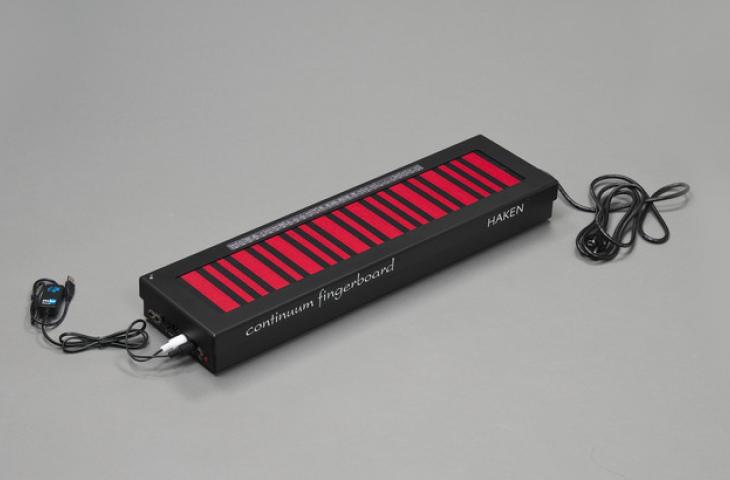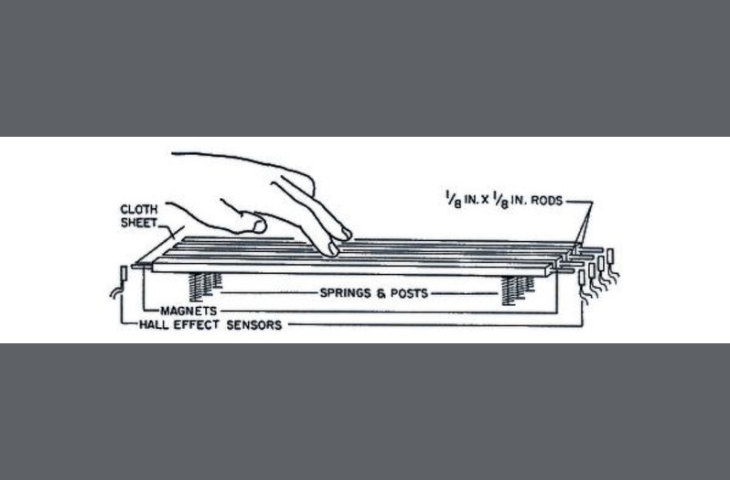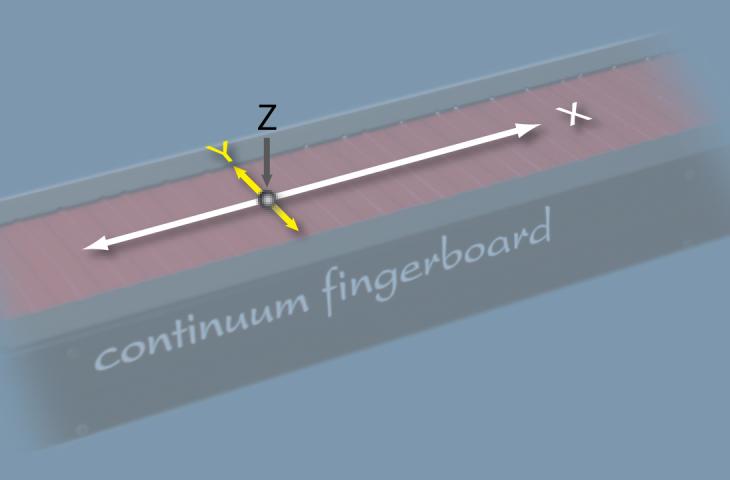December 2023
Fig.1

Continuum Fingerboard, Lippold Haken, Illinois, before 2016, inv. 2016.0089
Fig.2

© Lippold Haken, 2016
Fig.3

© Lippold Haken, 2017
Introduction and history of the Continuum Fingerboard
The Continuum Fingerboard (fig.1) is an electromechanical instrument of the controller synthesizer type. From the traditional keyboard, the instrument has only retained the keyboard pattern as a visual aid for the player. The surface is smooth, like the fingerboard of a violin, enabling the playing of all possible tones between the intervals of the chromatic scale. In this sense, the Continuum Fingerboard is more closely related to the Ondes Martenot (see Instrument of the Month July 2013) than to an ordinary electric keyboard. Hence, the instrument is sometimes called a fretless keyboard.
The Continuum Fingerboard is still handmade by its designer, Lippold Haken, a professor of Electrical and Computer Engineering at the University of Illinois. Haken developed the Continuum in the mid-1980s and first marketed it in 1999.
Technical operation and sensitive sensors
The musician places their fingers on a neoprene (synthetic rubber) playing surface, beneath which hundreds of small aluminum rods on springs are arranged. At their ends, these rods have electromagnetic sensors that transmit information (position, pressure, movement) created by the fingers (fig.2).
This information is processed by a DSP (Digital Signal Processor) and converted into MIDI (Musical Instrument Digital Interface) data. Unlike other MIDI master keyboards, the Continuum requires a specific synthesizer to reproduce all technical variations in playing. Since 2008, the instrument has been equipped with an internal modular synthesizer, the EaganMatrix, designed by Edmund Eagan, a friend of Lippold Haken. While an ordinary MIDI keyboard can only start or stop a sound, with varying degrees of touch sensitivity, the Continuum allows for the same complex expression as any acoustic instrument.
Musical expression and mastery of the iInstrument
The sensors beneath the surface respond very precisely to finger position and pressure in three dimensions: X, Y, and Z. They provide pitch resolution of 0.1 cent (1 semitone = 100 cents) along the length of the instrument (X), allowing continuous pitch control for portamento effects. The finger’s lateral position (Y) controls the timbre, while the vertical position (Z) determines the sound volume. Thus, a pressed note can evolve during playing along these three dimensions (fig.3). Another feature allows converting finger tremble into vibrato, which is impossible on a keyboard but characteristic of violin and guitar playing. The Continuum is capable of polyphonic performance with up to 16 simultaneous voices.
According to Lippold Haken, mastering the Continuum Fingerboard, like any other instrument, requires many years of learning and practice: “Most of the instrument’s expression does not come from the sound itself; rather, it comes from what you do with your fingers.”
Text: Matthieu Thonon